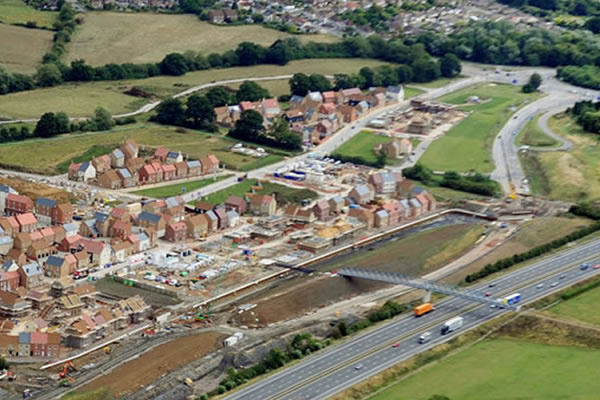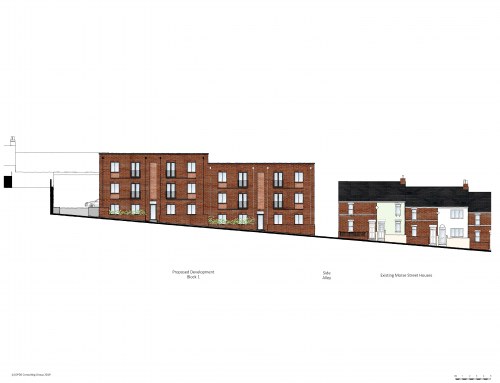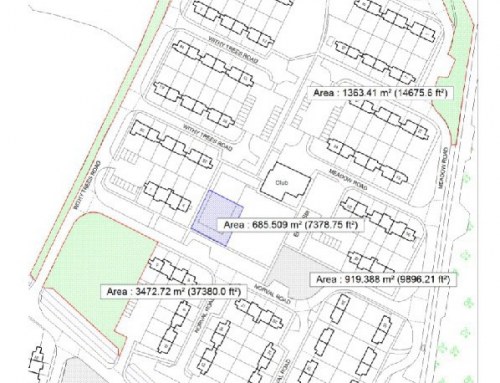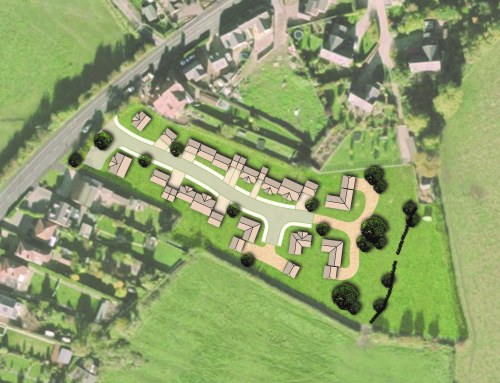Tuesday’s Housing White Paper makes plenty of noise about the need to “fix our broken housing market”. It notes that, since the 1970s, an average of 160,000 homes have been built each year in England, when we need to be building 225,000 to 275,000 or more.
It requires Councils to produce Local Plans (or Spatial Development Strategies) quickly, and review them every five years, and it suggests an increase in housing densities and a greater use of previously developed land.
However, the White Paper will make it harder to get planning permission for new homes. It attempts to stop the planning by appeal that has become necessary in recent years to deliver much needed housing when local planning authorities are unable or unwilling to do so. This is because the Government is concerned about the impact these appeals are having on locally produced neighbourhood plans.
The presumption in favour of sustainable development in the current version of the National Planning Policy Framework results in planning applications and appeals in areas that cannot demonstrate an adequate five year housing land supply being approved unless there is a very good reason not to do so.
The White Paper proposes to water this down via a new housing delivery target. This assesses Councils’ past performance in determining whether the presumption in favour of sustainable development applies. In the longer term (beyond November 2020) the presumption would not apply if Council’s meet 65% of their target. In the shorter term the requirement is much lower.
The consequence of this is that Councils can avoid providing for their full objectively assessed need; in fact, they only need provide 65%. This means that there will be no consequence for Councils if, between them, they deliver the current 160,000 homes per year. This means it will be harder to get planning permission for new homes.
There is an opportunity to make representations to the Government on the Housing White Paper by 2 May 2017.
A summary of the content of the White Paper is below:
Local Plans
- Every local planning authority must have an up to date plan, i.e. less than 5 years old. If not, the Government can “intervene”. The plan must also be updated if the existing housing target can no longer be justified.
- Neighbouring local planning authorities should produce a Statement of Common Ground setting out how they will work together to meet cross border issues, including their combined housing requirement.
- Confirmation that Councils do not need to produce a single local plan. Instead, the Government will set out a list of strategic priorities that must be planned for, with flexibility about how they do so.
- The current soundness tests are to be amended, although no indication is given about how.
- There is a suggestion that the evidence base informing the local plan should be “more appropriate”.
- Potential for combined authorities to produce spatial development strategies (instead of local plans) to allocate strategic sites.
- Standardised housing requirement (more detail later). PINS to determine if an LPA can deviate from this approach.
- Housing requirement to be met in Local Plans unless NPPF provides strong reasons not to do so, or adverse impact of doing so would significantly and demonstrably outweigh benefits.
- Need for Local Plan policies to address needs of particular groups, e.g. older and disabled people.
- Greater emphasis on density, including:
– the avoidance of low densities where there is a shortage of housing land;
– Local Plans to address the scope for higher densities in urban locations well served by public transport;
– ensure density reflects character, accessibility and infrastructure capacity of an area. - Presumption in favour of developing previously developed land in settlements for housing.
- Local Plans to include policies to support housing on windfall sites and to give great weight to using small undeveloped sites within settlements for homes.
- At least 10% of sites allocated for housing should be half a hectare or less.
- Amend NPPF to support exceptions sites for affordable homes for local people. Local authorities can set a local connection test.
- LPAs to identify opportunities for “villages to thrive”.
- Support for new settlements, and proposal to legislate to enable locally accountable New Town Development Corporations to deliver them.
- Protect the Green Belt, and amend it only when all alternatives have been examined. Potential to require compensatory improvements to environmental quality or accessibility of remaining Green Belt, and to require higher developer contributions from Green Belt development.
Neighbourhood Plans
- To have “full weight in the planning process as early as possible”.
- Amend planning policy so that neighbourhood planning groups can obtain a housing requirement figure from their local planning authority.
- Protection for Neighbourhood Plans related to performance of local planning authority against the housing delivery test.
- Greater emphasis on design quality
Housing Delivery
- The response to housing delivery is heavily led by the recommendations from the Local Plan Expert Group.
- Whether a five year housing land supply exists should be agreed annually through discussion/ consultation/ examination between local planning authorities and developers. Once this is agreed, it should be fixed for one year.
- Neighbourhood plans should not be considered to be out of date “unless there is a significant lack of land supply in the local authority”. The text includes a reference to Gavin Barwell’s December 2016 Written Ministerial Statement that suggested only three years supply was needed. This appears to have been replaced by the housing delivery test.
Housing Delivery Test
The requirement against which housing delivery is tested will be:
- the adopted local plan requirement if the plan is less than 5 years old; or
- ONS household projections if the plan was adopted more than 5 years ago.
- From November 2017, if delivery (from April 2014 to March 2017) falls below 95% of the annual requirement, then the Council will produce an action plan explaining why the shortfall occurred and what will be done about it.
If delivery falls below below 85%, a 20% buffer is added to the 5 year requirement.
From November 2018, if delivery falls below 25%, the presumption in favour of sustainable development in paragraph 14 of the NPPF applies. From November 2019 this threshold rises to 45% and from November 2020 it rises again to 65%.
Land Ownership/ Developers
- Land deals (options etc) to be made publicly available.
- Proposal to improve transparency of end to end housebuilding process to identify blockages.
- Requirement for up-front information regarding the phasing of a proposed development.
- Large house builders to publish aggregate build out rates.
- Standard condition requiring development to commence within three years to be changed to two years.
Planning Fees
- Local planning authorities to be able to increase planning application fees by 20% if this additional income is invested in resourcing the planning department.
- Local planning authorities to be able to increase fees by a further 20% if the local authority is meeting its housing requirement.
- Suggestion of a fee to appeal a refusal of planning permission, perhaps to be capped at £2,000.
Conditions
- Pre-commencement conditions to be prohibited unless agreed with the applicant.
Developer Contributions
- Government to examine Community Infrastructure Levy and S106 regimes and to make announcement about a way forward in the Autumn Budget 2017.
If you would like to discuss this further please contact our Swindon or Derby planning teams







